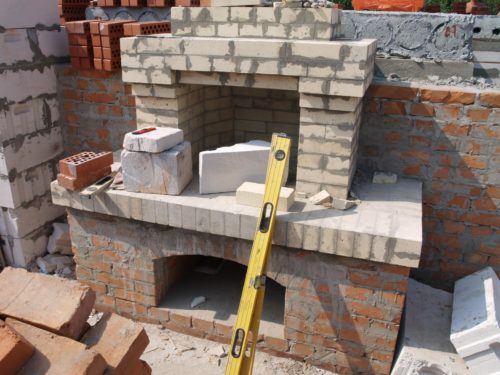
Masonry mortar for furnaces and fireplaces with their own hands Construction,Building materials

Anyone who has at least some experience in building business can carry out a furnace or a fireplace with her own hands. This may not be the most complex design, but it will be carried out its immediate tasks without complaints.
Content
An important aspect in this case is to create a masonry solution, from which the overall quality of work often depends, as well as the durability of the design.
In this material, we will consider the main features associated with the masonry solution, as well as with the specifics of its preparation.

The composition of the masonry solution for furnaces and fireplaces
First, it should be noted that the conventional cement-based solution is not suitable for creating furnaces and fireplaces. This is due to the fact that the above designs deal with high heat loads, so cement is excluded immediately.
Most often for such tasks, a mixture of clay and sand is used.
Next, consider the basic requirements for a masonry solution:
- Uniformity. If the mixture has normal plasticity, there are no lumps and other disadvantages, then it is more than a good sign. With this scenario, the mixture will be a high-quality binder material, which is not guaranteed after drying, but will give a small shrinkage.
- If a low-pile solution is used, then in this case there will be practically no shrinkage, but the strength of the masonry will be far from the most optimal. When drying, the mixture can begin to crack, and later - crumble on the part.
- A large shrinkage of a too plastic masonry solution is also bad, even though such a mixture is well smoothed on the surface, and with its help you can create beautiful seams.
From this we can conclude that the masonry solution should have an average ductility. Approximately this situation, which is described in the first paragraph, is the most optimal to create a furnace or fireplace.

Quality of clay and sand for making a masonry solution
To create a high-quality homogeneous solution, you need small and clean sand. Experts recommend using river or mountainous sand, which is additionally sifted through fine sieve. Definitely in the sand there are large inclusions from which you need to get rid of.
If we talk about clay, then quickly determine the quality of this natural material is not easy. Most often, specialists who have experience in using similar materials are allowed to similar work. However, there are other ways to establish clay quality:
- The most reliable method of checking the quality of clay takes a lot of time. For this you need 5 portions of material 1 liters. The first portion of the clay should be mixed with water, to the second one you need to add 1/10 of the sand, to the third - 1/4 banks, to the fourth - 3/4, and the last bank must be filled with sand completely. After that, the material is extracted from each container and balls are made, a diameter of 0.5 cm. Next, each sample must be sided in the room for a dozen days. In the process, you can apply the technology of creating a mixture at which the samples did not scattered during flattening, but remained in the initial state.
- There is a faster option to obtain the necessary information. To make sure the clay, you need to cook all the same balls, and between two boards try to break them off. If, with such attempts, the material is completely crumbling, then this indicates its low quality. With high quality of the solution on the ball, small cracks will begin to appear.
- To determine the plasticity of the material, it will be necessary to put clay into the container and mix it with water. Next, you need a plate, which goes into the container, after which it will be possible to control how much material has been poured. If the layer is thin, then it speaks of its low plasticity, and on the contrary - a large layer indicates a high thickness of the material. If the layer of sticking clay is about 2 mm, then this is the optimal result, and this mixture makes sense to use in construction work.

Preparation of masonry solution
The above methods can determine the most successful ratio of sand and clay, after which it is possible to start sifting the material. With the help of the sieve, sand is sifted, and the clay will first need to be twisted with ordinary water, and then stirring material, filling will occur.
- Immediately the main part of the work begins with mixing the mixture with a thin wooden bar. In this case, it will be necessary to sift everything through a large sieve and make sure that the mixture is homogeneous. Ultimately, the mixture created on the basis of sand and clay should be medium density, and also to be applied with a layer of up to 5 mm. Such seams during masonry will be the most optimal for obtaining a decent result.
- To increase the strength of the solution, there are recommendations in which the cement adding is approximately 3/4 of the total capacity. Also to increase the strength in the mixture, about 200 g of a wailed salt can be used.


















